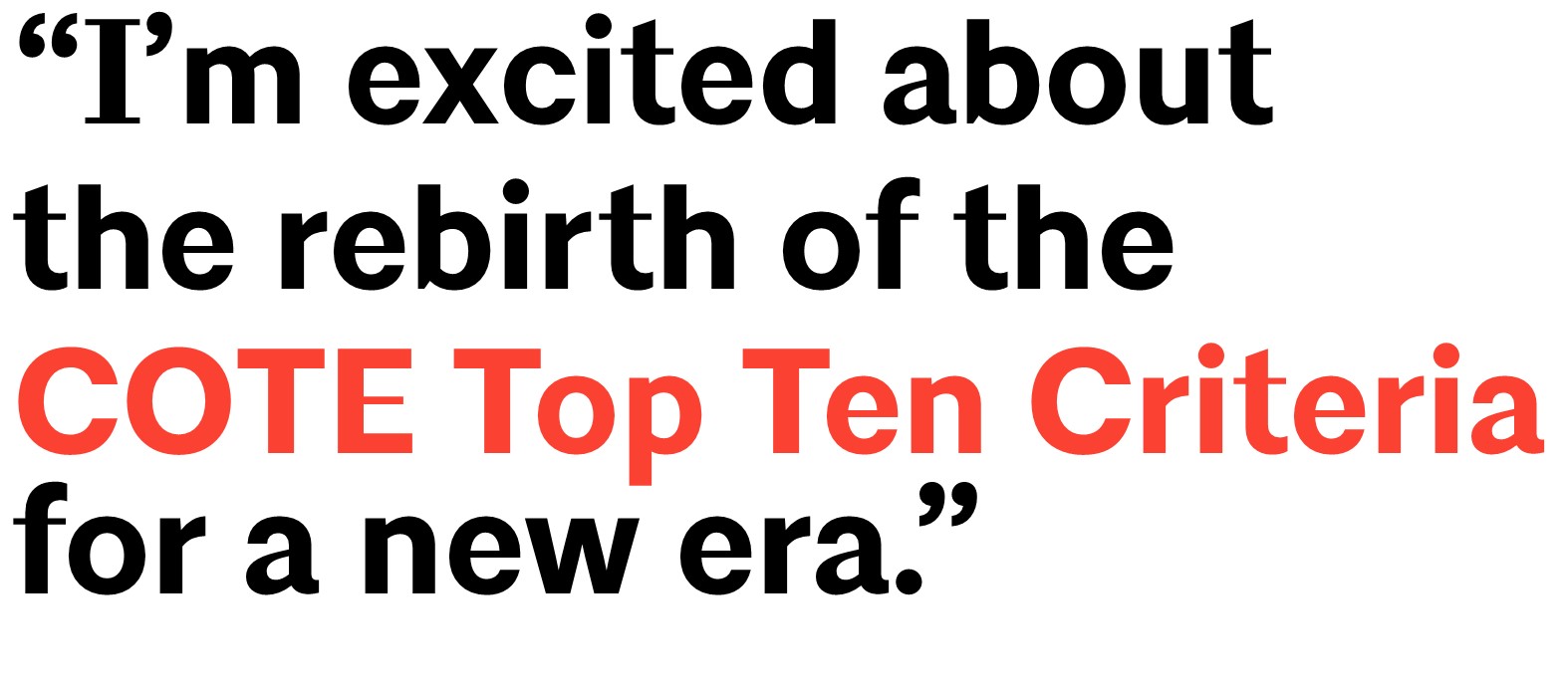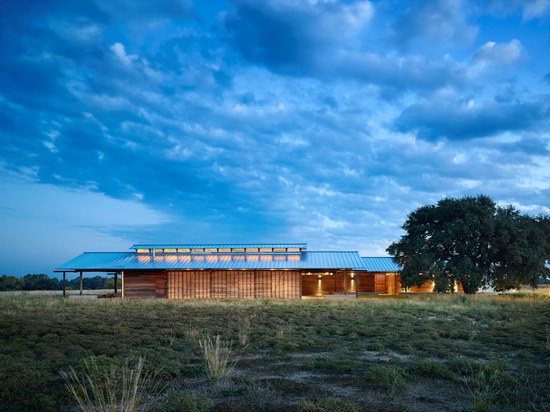
By Mary Ann Lazarus
On October 6, sixty lucky attendees at the AIA's booth at Greenbuild in Los Angeles got a sneak peak into the completely revised metrics for the AIA Committee on the Environment's signature Top Ten Award program. Here's what a few said:
"The revised Top Ten metrics provide a powerful framework for documenting great design—design that integrates outstanding esthetics, occupant experience, and socio-environmental impact. The emphasis on documented outcomes, as opposed to design intentions, reflects how COTE Top Ten is evolving as a leadership model for the profession."
Nadav Malin, President, BuildingGreen
I'm excited about the rebirth of the COTE Top Ten Criteria for a new era. Although the core values of sustainable design remain the same, the addition of relevant issues like wellness, resilience and economic value as well as new metrics speak to the increasing depth of knowledge in the profession.
Margaret Montgomery, FAIA, Principal NBBJ

The COTE Top 10's revamped measures for 2017 drive the integration of excellence performance and design with a new understanding of critical metrics. These new metrics focus on issues like resiliency and human health, providing emphasis on the crucial issues for architecture in this century.
Betsy delMonte, FAIA, Principal Transform Global
"The new COTE Top Ten measures signify a much deeper integration of building systems, both internal and external of the building. Building metabolism, community engagement, regionality, adaptability and toxicity are factors, and the measures help keep these top of mind. The measures are very useful as a reference."
Marc Mondor, FAIA, Principal evolveEA
In addition to updates to the metrics, the revised requirements emphasize the importance of completed project performance. While newly completed projects may be submitted, project teams are strongly encouraged to submit projects for which performance and occupant satisfaction data are available a period of 12 months or more with at least 75% occupancy. There is no time limit for submission after project completion.
The COTE Top Ten design award receives the most media attention of all of the AIA design awards with mainstream press attention from Fast Company National Geographic and others. It's time to identify one or more (why not!) projects from your firm's portfolio that is worthy of this important design award. The submission process begins on November 14 and closes January 18.
View the new measures >
Learning from the Leaders:
Collective Wisdom & Feedback Loops (Part 3)
By Kira Gould

The Josey Pavilion is a multi-functional education and meeting center that supports the mission of the Dixon Water Foundation to promote healthy watersheds through sustainable land management.| Decatur, TX | ARCHITECT: Lake|Flato Architects | PHOTO: Casey Dunn
Read part 1 of this series >
Read part 2 of this series >
The "Collective Wisdom & Feedback Loops" section of the AIA COTE Top Ten recognition program has always been one of my favorite aspects of this unique design awards program. It used to be called "Lessons Learned," and I have always felt that it is the part of the entry that invites reckoning and speaks directly to the realm that is most wanting in this sector. Read more >
November 17, AIASC Resilience: By Design Conference
Charleston, SC
This one day "mini-conference" will allow architects from across the state and region to gather, learn, and discuss the vital role that architects play in both Reactive and Proactive Resiliency Planning and Design. Learn more >
December 9 at 12:00ET, COTE Top Ten Measures webinar
In this session, COTE Advisory Group members will take you through each of the new measures in detail and answer your submission questions. Register now >
February 10-12, Taliesin West Colloquium
Scottsdale, AZ
Join the Historic Resources Committee at Taliesin West to learn about and discuss inspiring and unexpected case-studies that will make you rediscover the potential within your own community.
Sign-up to receive Taliesin email updates >